Pine Needle Tea is a refreshing foraged drink that boosts the immune system and warms the soul during the darkest of winter days.
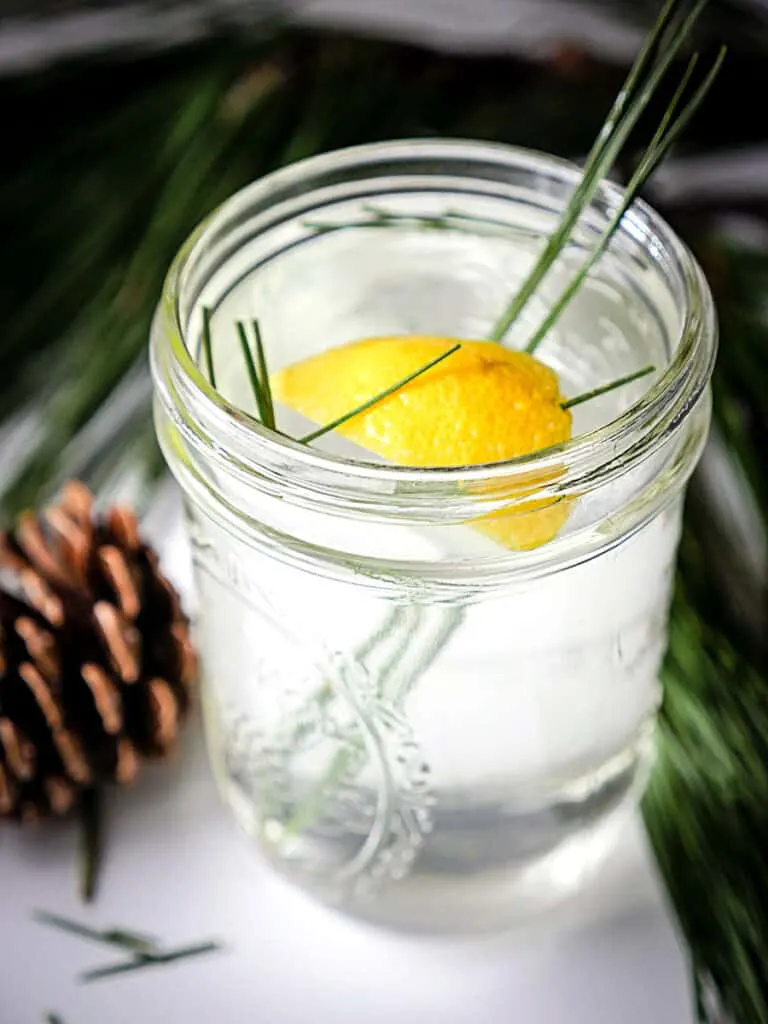
I don’t want to let my inner hippie shine too brightly right now, but I am a firm believer that Pachamama (Mother Earth) provides you with exactly what you need at the time you need it most.
Case in point: it’s the middle of winter. You’re tired, drained, and feel a possible case of the sniffles coming on.
Looking for something to treat your ailment, you glance out the doorway of your thatched hut (I forgot to mention that you live in a thatched hut).
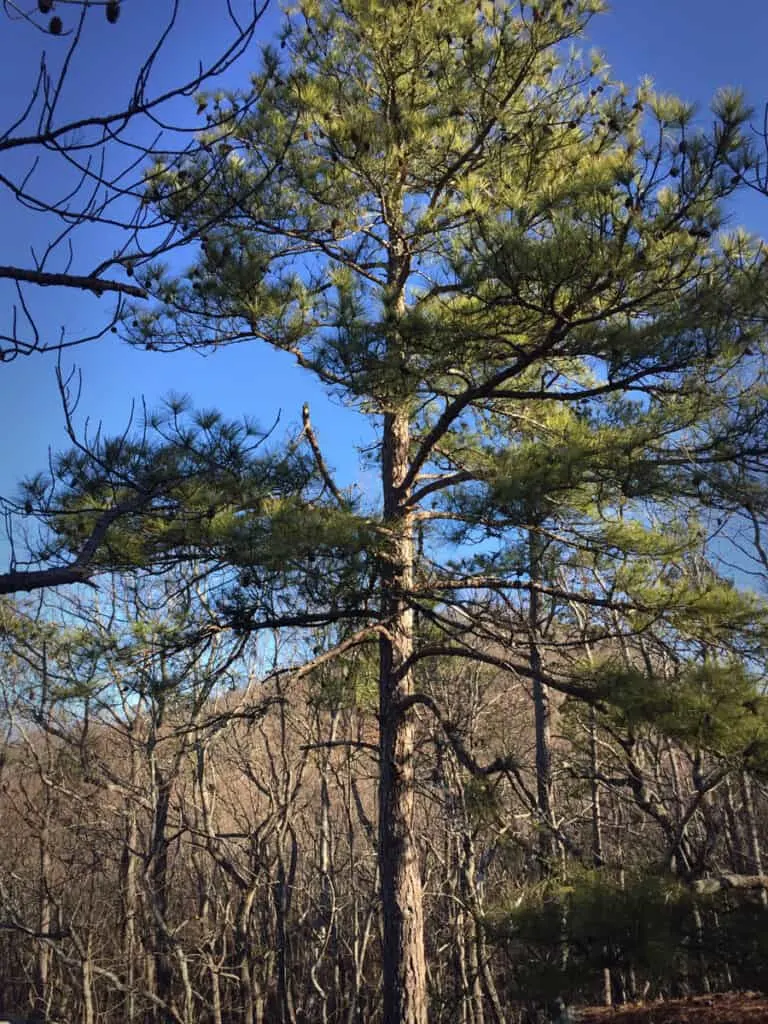
The landscape is seemingly barren, save for a few green entities.
Pine trees.
Yes, the common conifer tree can be use to make a brew loaded with immune-boosting vitamins.
Once again Mother Earth saves the day. Isn’t she a wonderful lady?
Pine Needle Tea Benefits
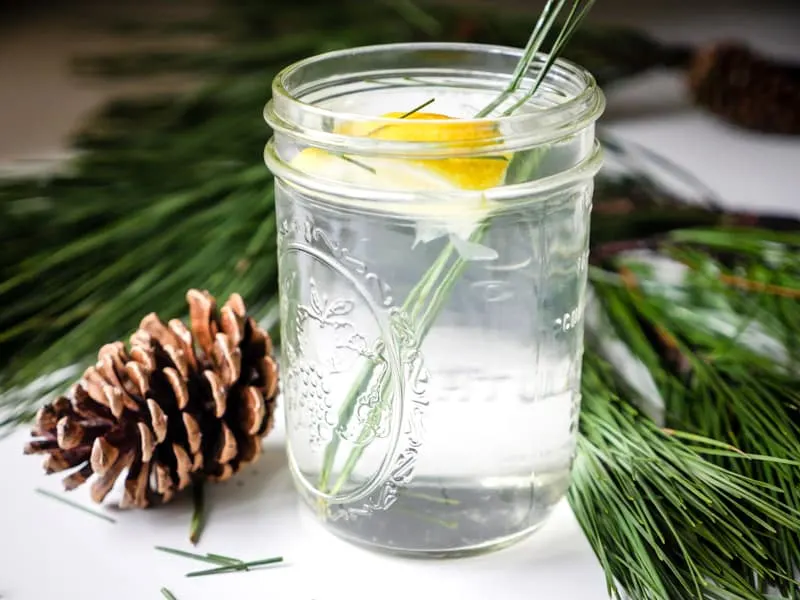
Several benefits of pine needle tea include:
- Rich in Vitamin C: a cup of pine needle tea contains more than 4 times the amount of Vitamin C found in a glass of orange juice.
- High levels of Vitamin A: pine needles are a great source of Vitamin A, which is good for eyesight and immunity.
- Expectorant properties: the tea can be used to ease chest congestion and alleviate sore throats.
- Antioxidants: pine needles are also a great source of antioxidants, which protect your cells from free radicals.
- Refreshing taste: not surprisingly, the tea has a delightful, piney taste.
Pine Needle Tea FAQ
Pine needle tea has a mild, pleasant taste. Depending on the variety of pine needles use, it can also have notes of citrus.
It is generally considered safe, however pine needle tea should not be consumed if you are pregnant or nursing as is may cause a possible miscarriage.
The Eastern White Pine makes a great tea, but any variety of pine, spruce, or hemlock tree can be used. Avoid using needles from any Cypress or Yew tree as they can be toxic.
How to Identify Pine Trees
Half the fun of making pine needle tea is venturing outdoors to find some pine needles.
Spotting pine trees is particularly a piece of cake in the winter months—just look for something tall and green.
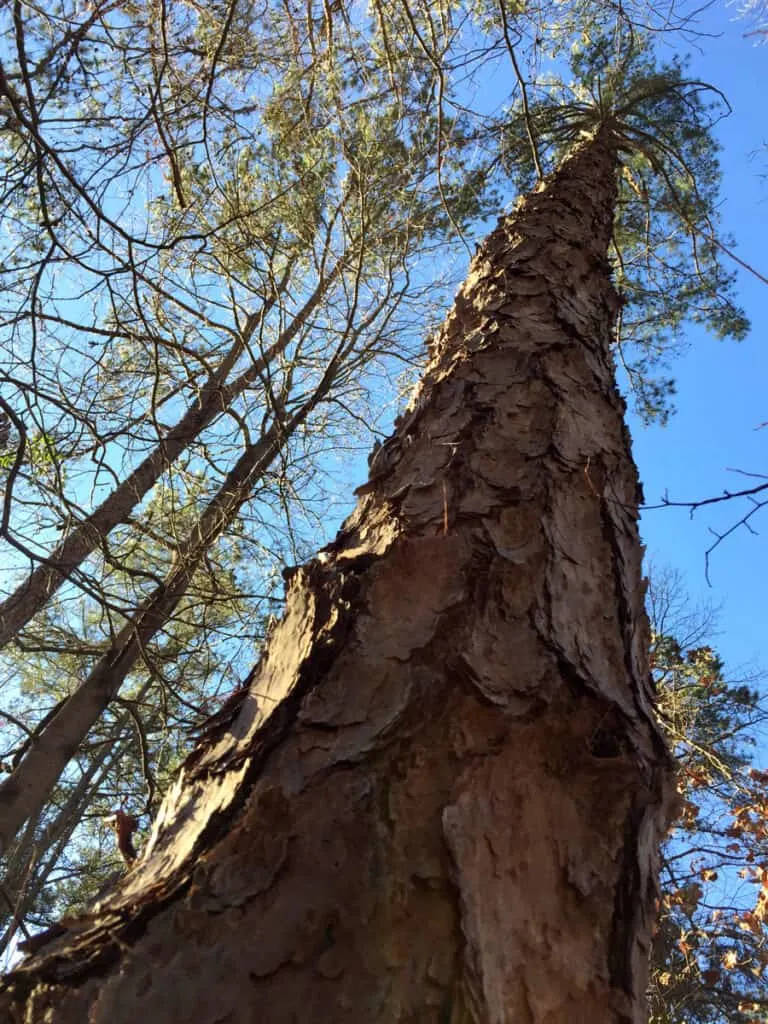
During this particular winter expedition, I came across a grove of Loblolly pines.
The Loblolly is identified by its height (90-110 feet when fully mature), scaly bark, and 3 to 6 inch cones that are tipped with spines. It is an extremely common tree here in the Southeast.

Fun fact: the Loblolly pine is the most common tree in the U.S. behind the red maple.
A key identifying characteristic of pine trees is that the needles form in clusters, as opposed to single needles sprouting directly out of the branch.
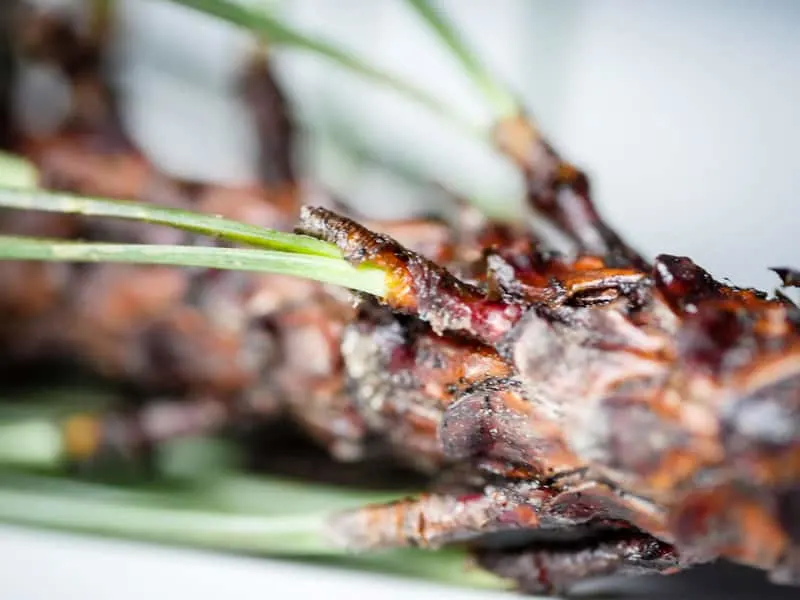
Another really cool identification trick is that the number of needles in the cluster to help identify the particular kind of pine tree.
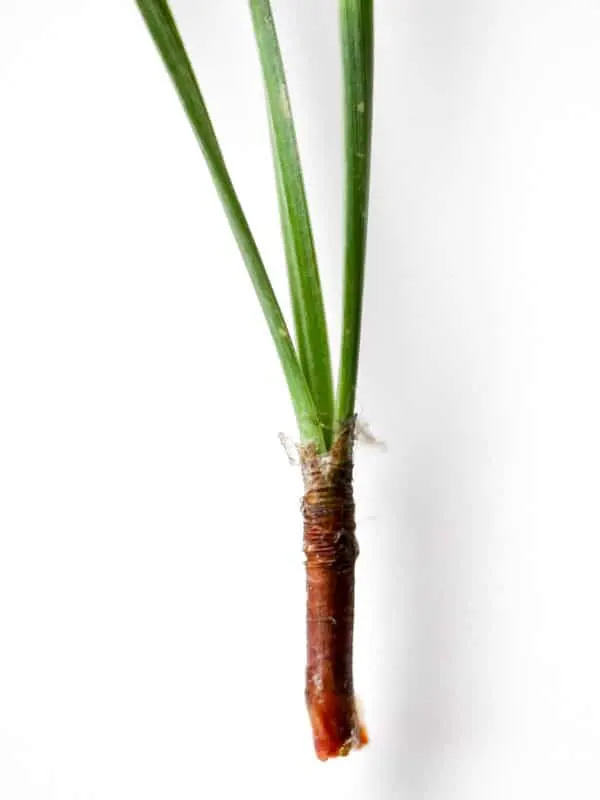
In this case, the Loblolly has three needles per node.
In contrast, the Eastern White Pine–another common pine tree in this area–has five needles per cluster.

IMPORTANT NOTE: Don’t make tea out of anything that you can’t 100% identify. Some types of evergreens like Cypress and Yew trees are toxic. Also, don’t drink pine needle tea if you are pregnant or nursing.
How to Make Pine Needle Tea
Start by rinsing the pine needles, and removing any woody ends from them.
Then, chop the pine needles into roughly 1/2 inch pieces. I’ve found that kitchen shears work great for this.
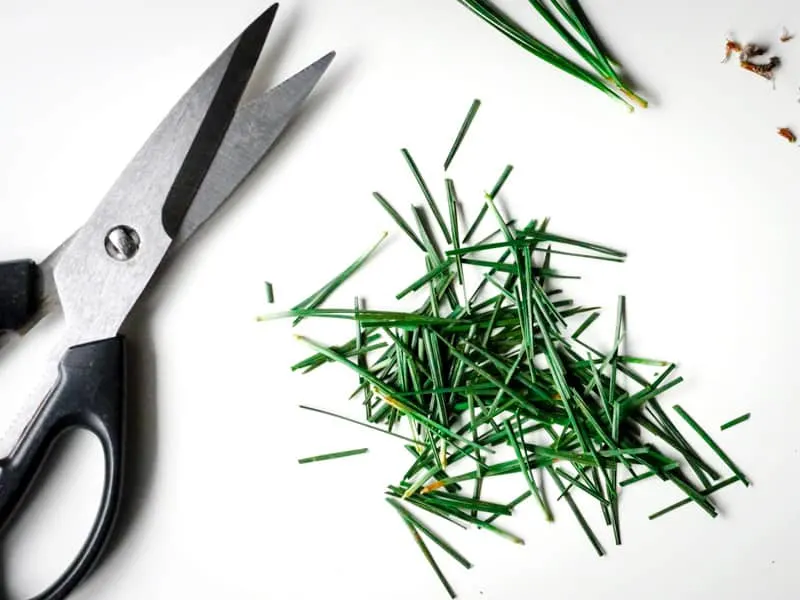
Add about 2 heaping tablespoons of chopped needles to a cup or mug and pour in 8 ounces of boiling water.
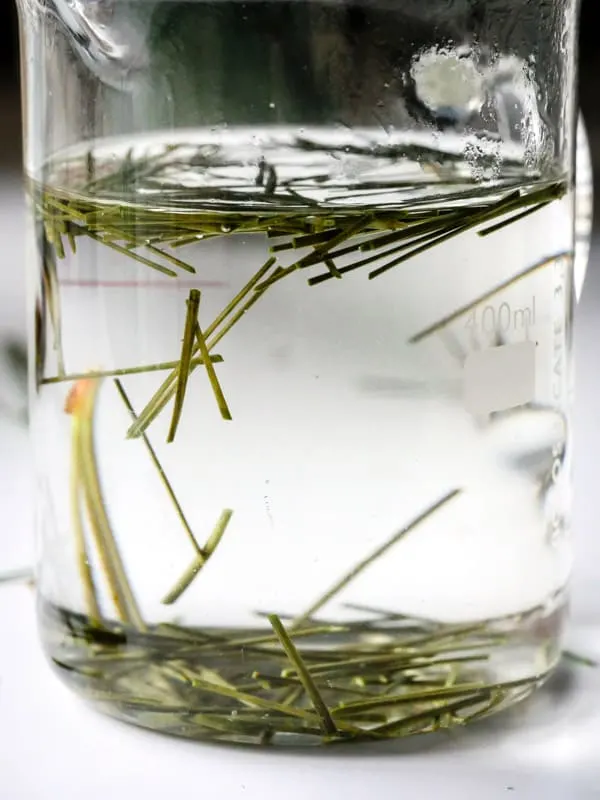
Cover the mug with a lid or plate and allow the needles to steep for 10-15 minutes. They will turn brownish and start sinking to the bottom of the mug.
As an optional step, you can strain the needles after steeping.
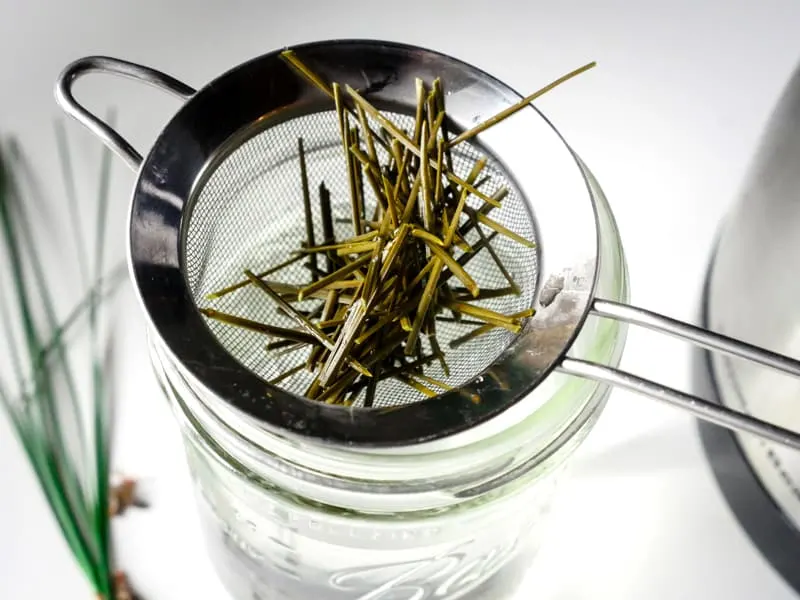
Add squeeze of lemon and some honey to the tea if you desire. Enjoy!
More Tasty Foraged Recipes:
Pine Needle Tea
Ingredients
- 2 tablespoons pine needles roughly chopped
- 8 ounces boiling water
- 2 teaspoons lemon juice
- 2 teaspoons honey (optional)
Instructions
- Gather about a handful of pine needles. Rinse them well and remove any woody ends. Roughly chop the needles into 1/2 inch pieces.
- Add roughly two heaping tablespoons of the chopped pine needles to a mug. Pour in the boiling water, then cover the mug and steep for 10-15 minutes.
- Strain the needles and stir in the lemon juice and honey if desired.
The ingredient or equipment sections above may contain affiliate links to products that I personally use or recommend!
This post was originally published on February 19, 2018 and last updated September 20, 2020.

Samuel
Saturday 4th of February 2023
I have had this a bunch of times but like a lot of stuff these days I kinda forgot about it. I'm looking for a white pine right now! Thanks for the reminder and recipes. New sub Samuel B.
Kim
Wednesday 1st of February 2023
A great source for organic Eastern White Pine loose needles and bagged tea is www.pineneedletea.org . Lots of helpful information, links to published medical literature regarding health benefits of pine, etc.
Kerry
Friday 25th of March 2022
Thanks for this. My Qigong group recommended this during covid symptoms but i needed it straight away (live in Czech Republic and wasn't 100% sure what it was called here) so I popped down the lane, cut a few branches, and voila! Seems to have helped with sleep last night. Much appreciated!
Ioanna
Tuesday 30th of November 2021
The inner hippy in me is diggin it Brian! ;-)